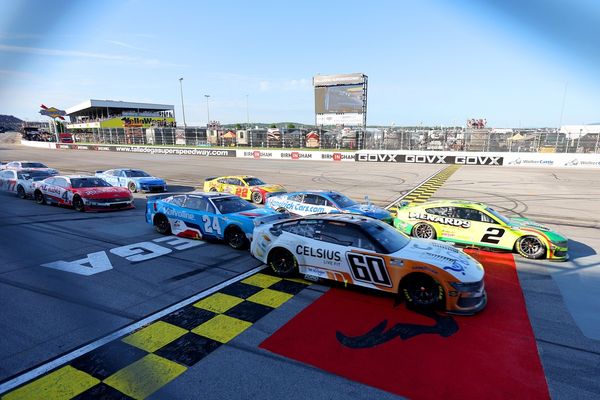Beneath layers of precious fossils, Queensland palaeontologists have made a discovery that reshapes our understanding of the prehistoric outback.
For months, Scott Hocknull has been loading bones and fossils into a CT scanner. It's not a medical procedure, and he's not a medical doctor.
Dr Hocknull is a palaeontologist – like Australia's version of Jurassic Park's Alan Grant – and what he is doing is more like a high-tech game of Cluedo.
"These are really rare and they're very, very precious specimens," Dr Hocknull said holding a fossilised dinosaur footprint.
"So you don't go and just cut them up and start looking inside."
Under a new partnership between Queensland Museum and Queensland X-ray, Dr Hocknull has been working with radiologists to digitally dissect precious, prehistoric pieces of the outback to solve the mystery of our state's famous dinosaur trackways Lark Quarry.
"It's like a CSI scene," Dr Hocknull said.
"Like a crime scene from 93 million years ago, where the perpetrators are missing; we have no eyewitnesses and we've got to look for evidence.
"It's the way of the future for the study of this sort of fossil."
Around 1,500 kilometres north-west of Brisbane – and about 150km from the outback town of Winton – is Lark Quarry.
It's the scene of hundreds of fossilised footprints that scientists have speculated about for almost half a century.
Understanding Lark Quarry
It's been commonly accepted the area was "barren" – but theories about its exact nature have varied.
Some have speculated that it was a shallow part of a river where dinosaurs would cross.
The prevailing belief, however, is that it was the site of a dinosaur stampede.
"Imagine that scene [from Jurassic Park] with Alan Grant and the kids and they're cowering behind the log and the dinosaurs come out and they're all changing directions, and he goes 'they do run in herds', and the big T-rex comes out and takes a small dinosaur and eats it," Dr Hocknull said.
"That idea is really premised on the fact that we have evidence in footprints at Lark Quarry in particular."
But what we see in the fossilised footprints is only part of the part of the story; and hiding beneath layers of precious ironstone, Dr Hocknull has found new evidence.
"Root systems of plants that were growing on the surface … many different layers of footprints, plants that were growing over the surface and we're even finding potential traces of insects and burrows," he said.
It suggests that Lark Quarry looked nothing like a wasteland.
"It's actually an environment … a big open flood plain with plants and a fantastic virginal life of lush growth and plants surrounding to eat," Dr Hocknull said.
"It's kind of like what you'd expect today in the Serengeti or the Okavango Delta.
"What we see with these root systems is there was a meadow of these ancient plants called horsetails. We even have the root systems of plants that ... had to be growing in the open air."
He believes that rather than a one time stampede – Lark Quarry was a regular dinosaur migration route over a long period of time.
"The trackways suggest that there were periods of time where dinosaurs were coming through the environment, attracted by the food and the insects and the big meat-eating dinosaurs were attracted by those small dinosaurs," he said.
'No-one is going to jail'
Dr Hocknull has been digitally modelling the root system and footprints from the scans, and rebuilding scenes of a "lush" Lark Quarry, which will be displayed at Queensland Museum.
But he doesn't want to discredit the other theories; in fact, Dr Hocknull is planning to release his findings to encourage further study.
"That's the hope; that they look at it with completely different eyes they go out and collect specimens and, over time, we build up this whole picture," he said.
"Like I said, it's a CSI scene. It's not like you've got to go to the court of appeal and say my evidence is better than your evidence," he joked.
"They're trackways, they're 93 million years old. No-one is going to jail."







